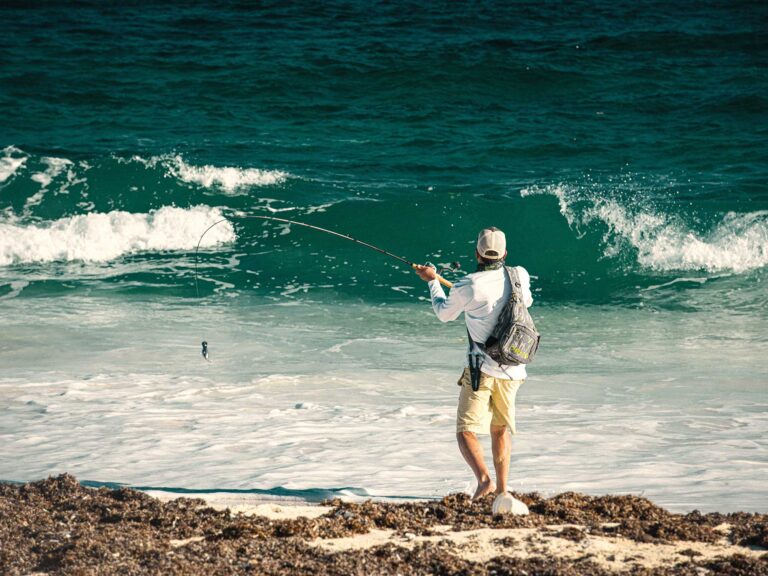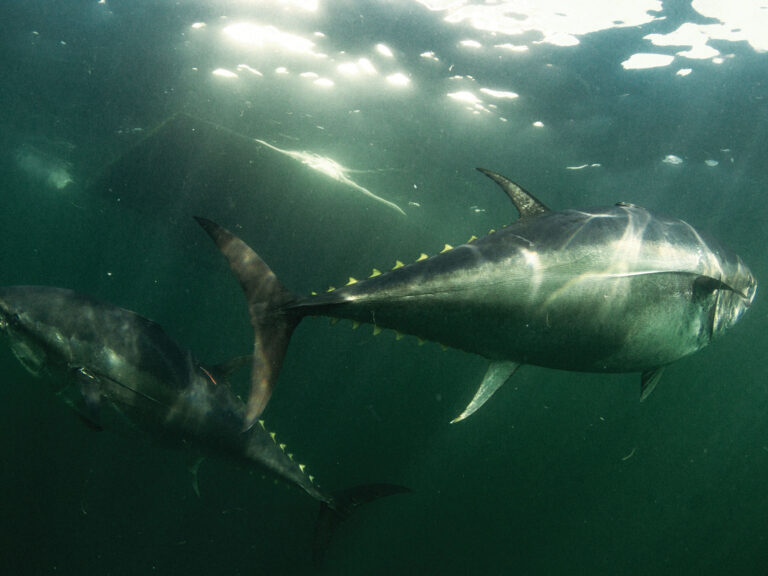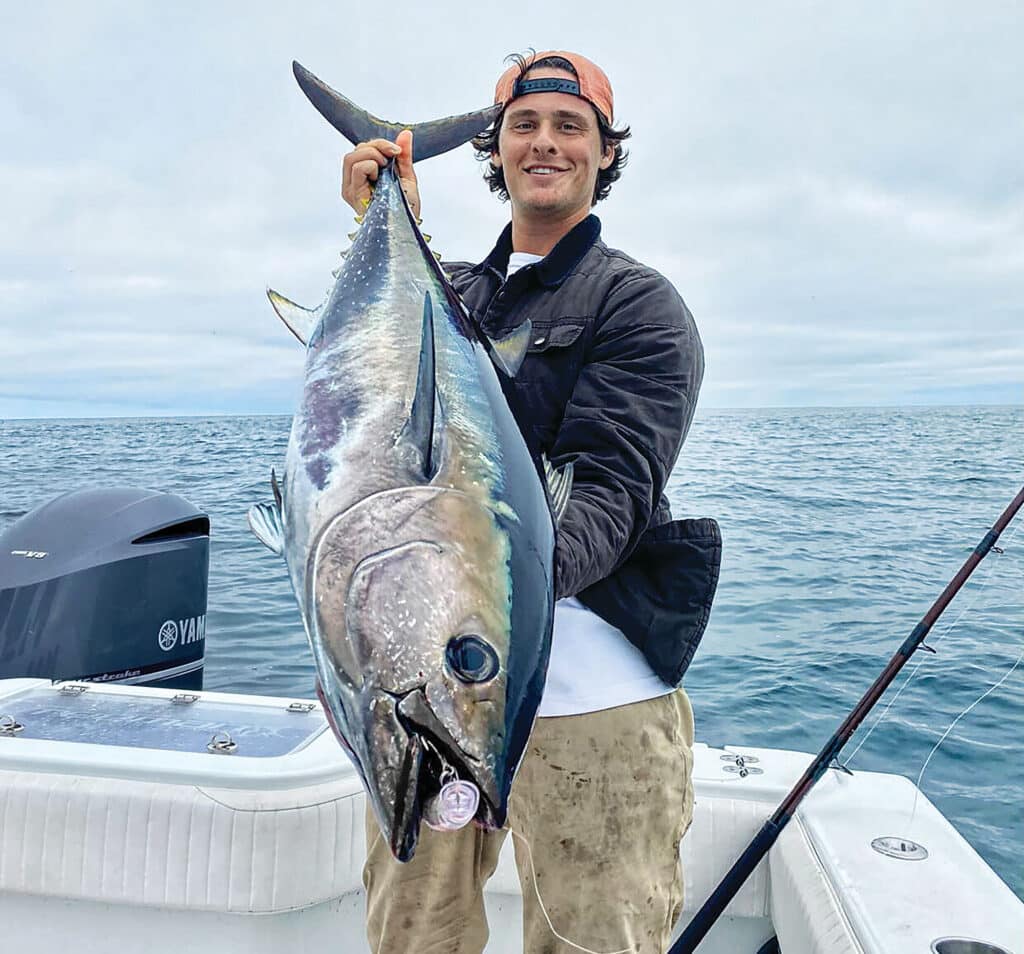
This scenario repeated itself time and again this summer off the Southern California coast: Boats would pull up on huge schools of surface-feeding bluefins—known as foamers for the vigorous way they churn up the water—charged with the expectation of multiple hookups on hard-fighting tuna. Lines baited with live sardines, anchovies or mackerel would be cast into the fray, while other anglers would toss a range of swimming jigs known as surface irons, including Colt Sniper spoons, surface poppers and other lures, working them right through the melee.
Occasionally, the fish would respond, and an angler or two would hook up on a bluefin that could range from a 25-pound schoolie to a 200-pound jumbo. More often, these tuna would disappear in a cloud of baitfish scales, never touching anything with a hook, leaving anglers stumped.
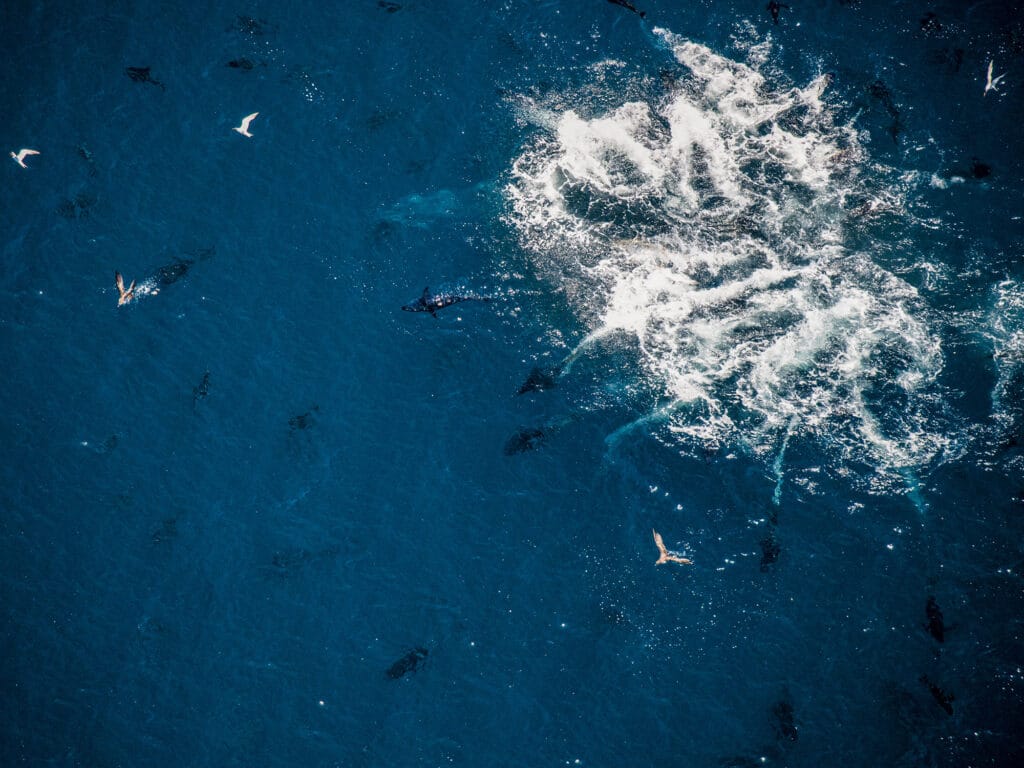
Such was especially the case over this past summer as bluefins of all sizes were often feeding on massive schools of “micro bait”—tiny anchovies, sauries and other finfish smaller than your pinkie finger. And as these oft-repeated angling experiences indicated, when tuna are focused on devouring small baits, it’s devilishly hard to get them to notice anything else.
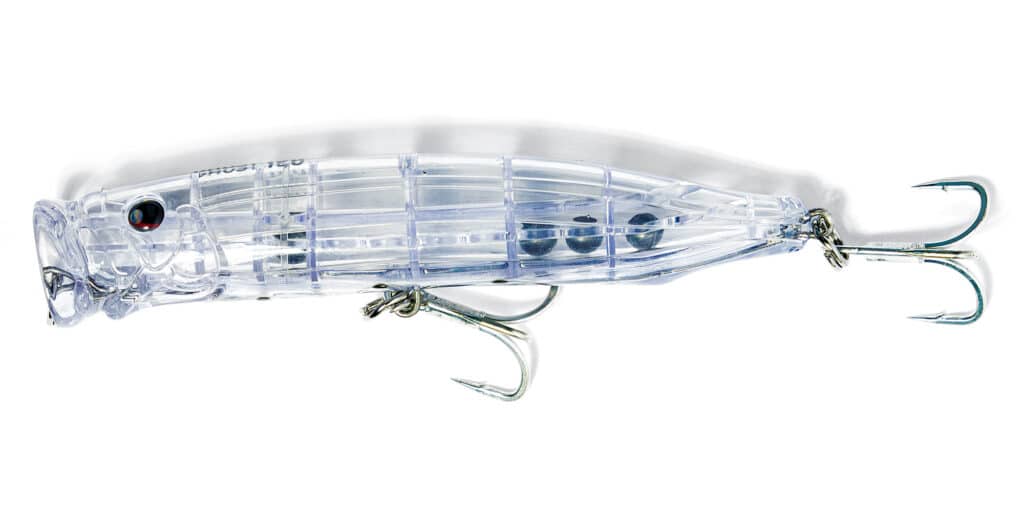
The cheat code for summer 2022 came in the form of the clear popper. Poppers of various sizes and colors have been popular for many years to catch surface-feeding bluefins. Their effectiveness makes perfect sense: These lures create splash, noise and commotion, appearing from below like a frantic baitfish trying to escape a feeding frenzy. They come in a wide range of metallic and natural baitfish colors, some with internal rattles to add to the commotion and illusion of a freaked-out baitfish.
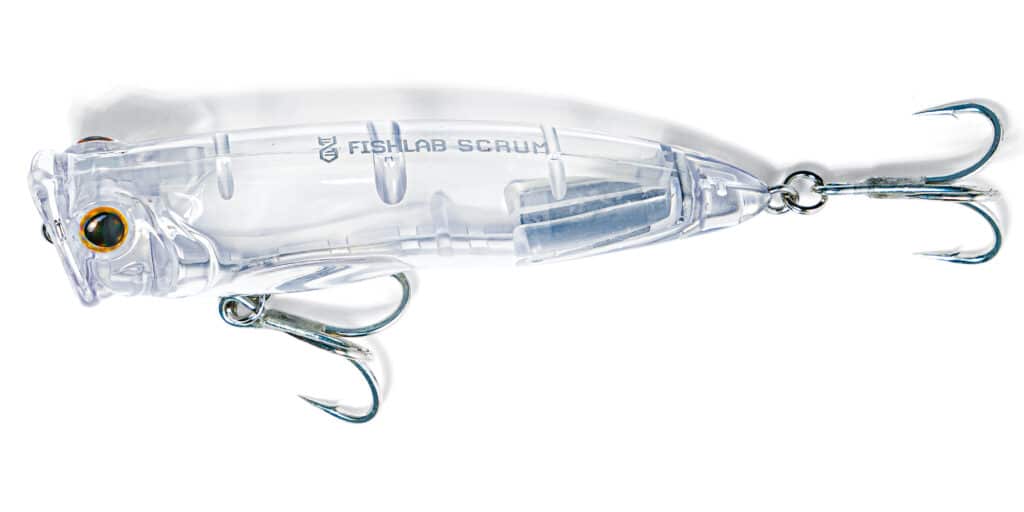
However, even these popular lures were now being dissed by tuna laser-focused on eating as many tiny baitfish as they could scoop into their considerable jaws. Tackle developers figured: If you can’t mimic the profile of a tiny baitfish in a practical-size lure, why not create a lure with no profile at all? Tackle manufacturers like Nomad Design, Fish Lab, Clear Choice Lures, Chasing Pelagics and Tackle House offer different styles of surface poppers that are literally see-through.
The concept is that these transparent lures displace water and create surface commotion when retrieved, much like any popper, yet tuna can’t get a good visual on the lure’s body size or profile. Tuna strike at the noise and splashing without the chance to get turned off by something that doesn’t look right.
Popular models include Clear Choice’s Ghost 150 Popper, Tackle House’s Feed Popper 150 Clear, Nomad’s Chug Norris 95 Holo Ghost Shad, Chasing Pelagics’ CP175 Clear Popper, and Fish Lab’s Scrum Popper Clear. Some have internal rattles, some don’t. While most are completely clear, the Chug Norris Holo Ghost Shad has a small internal color spot, giving the fish something appropriately small to key in on. While stealth is the overall approach, these lures are made heavy enough to cast on reasonable-size gear and tough enough to stand up to savage strikes and prolonged battles.
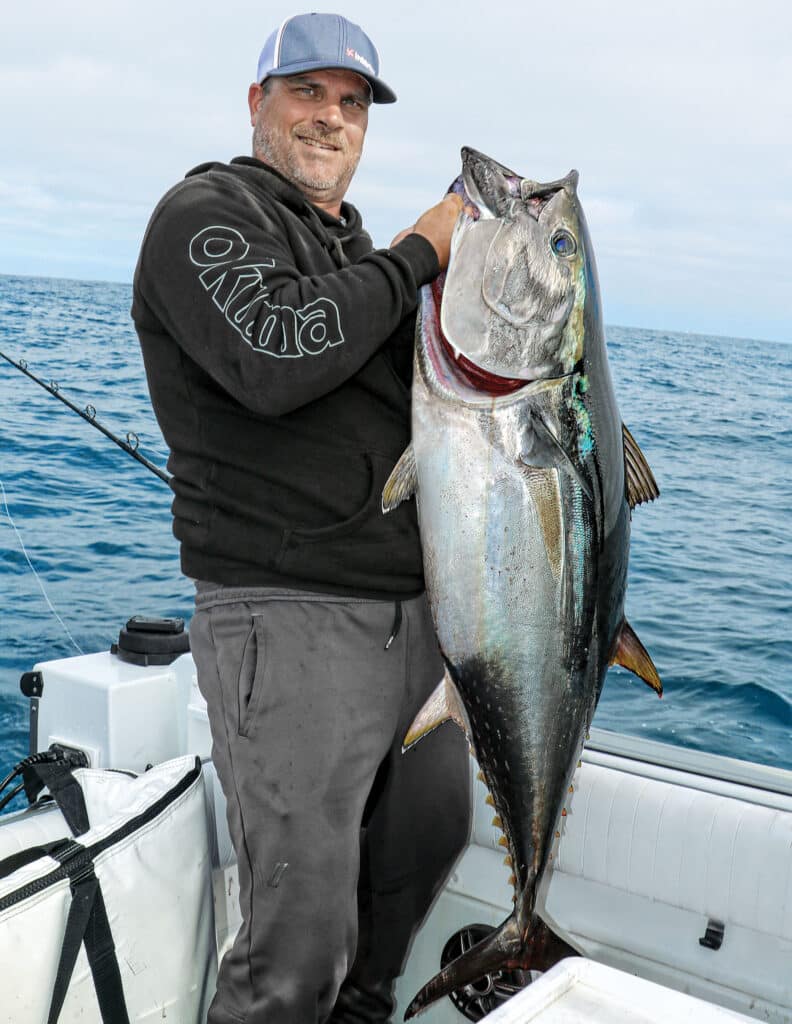
“Clear poppers are the best option when tuna are feeding on tiny bait,” advises Capt. Jimmy Decker, an expert Southern California tuna angler and fishing guide. “The fish key in on the motion, and I think they see the points of the two treble hooks as six tiny baitfish. I work the lure with a pop-pop-stop action. When your lure is in the middle of that foaming Jacuzzi tub of tuna, just leave it still. Nine times out of 10, you’ll get bit.”
“If the frenzy dissipates without a fish hitting your paused popper, work it vigorously back toward you to call in nearby tuna,” adds Erik Landesfeind, a fellow bluefin specialist. “Work the lure by sweeping your rod tip to the side rather than up. This keeps the popper face in the water for better noise and commotion.”
“When you do it right, be ready for explosive strikes,” says Capt. Gerry Mahieu, a successful tournament angler, professional fishing guide and owner of Clear Choice Lures. “The lack of visual profile eliminates any doubt fish may have, and they literally engulf these lures.”
Read Next: Southern California Bluefin Tuna Fishing at Night
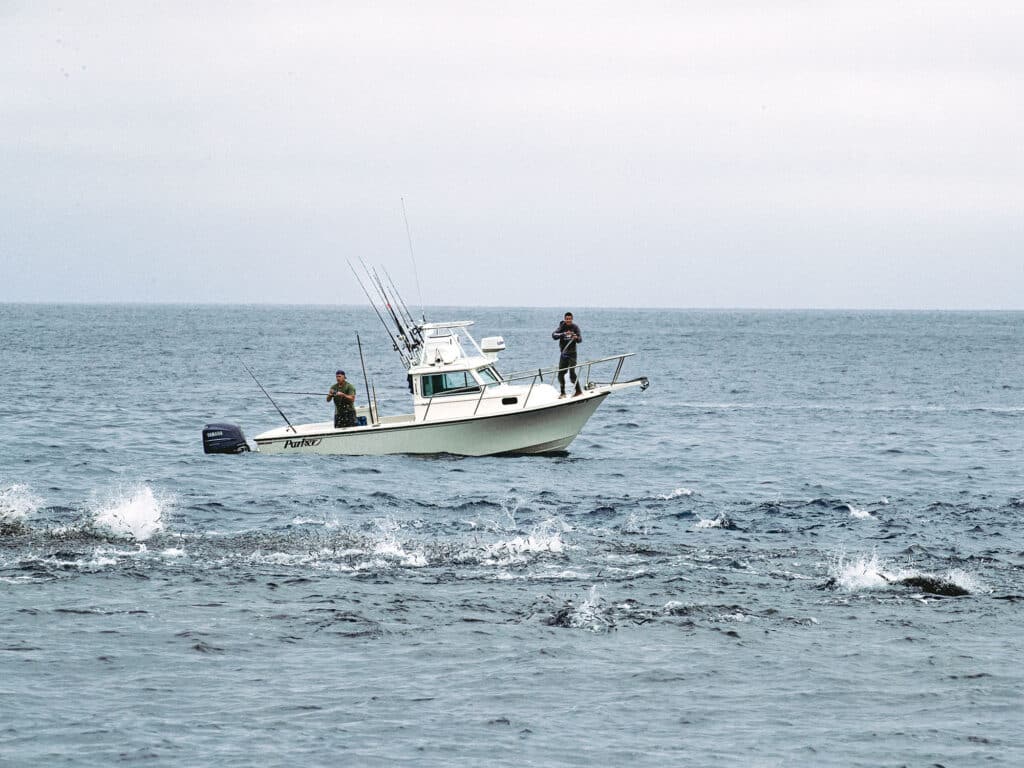
Your tackle needs to be able to cast these relatively light lures yet still handle large tuna. For bluefins up to 60 pounds, Landesfeind uses 400-size saltwater baitcasters with 65-pound braid and a short 80-pound fluorocarbon leader paired with a heavy-action saltwater bass rod. When targeting bluefins from 80 up to 200 pounds, he goes with a Penn Fathom 25 Narrow two-speed reel spooled with 80-pound braid and 100-pound leader. He pairs it with an 8-foot medium-action graphite composite rod.
SWS Tackle Box
- Rods: Daiwa Proteus 810H (tuna to 80 lb.); Calstar 800H (tuna over 80 lb.)
- Lures: Poppers such as the Feed Popper 150, Fish Lab Scrum Popper or Chug Norris 95 Holo Ghost
- Line: 65- to 80-lb. braid; 80- to 100-lb. fluoro top shot
- Reels: Daiwa Lexa 400, Okuma Komodo 400SS or Shimano Tranx 500; Penn Fathom 25N two-speed for larger bluefins





